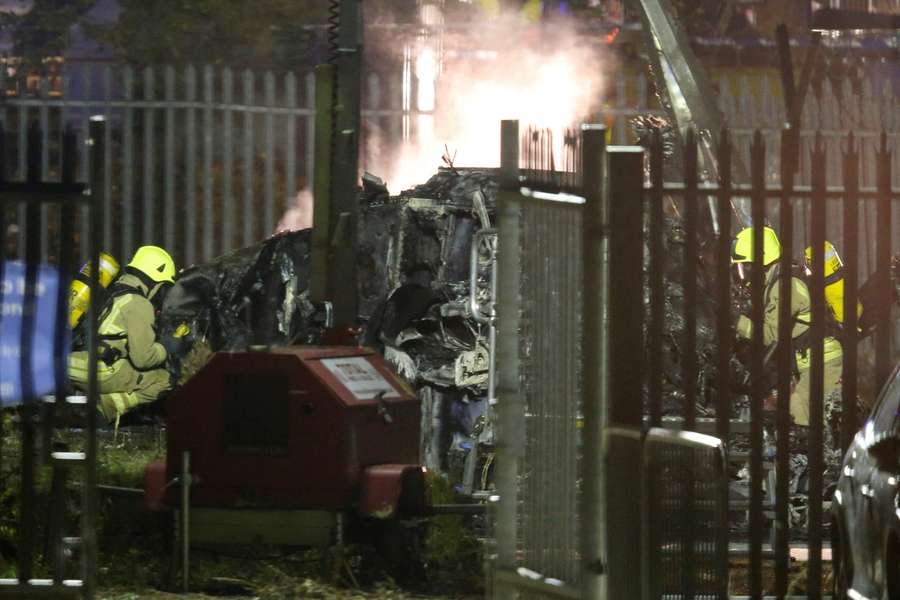Report deems Leicester City crash failure 'irrecoverable'

Pilot Eric Swaffer, his partner Izabela Roza Lechowicz and two members of Vichai's staff, Nusara Suknamai and Kaveporn Punpare, were also killed in the crash on Oct. 27, 2018, shortly after takeoff outside the King Power Stadium in the central English city of Leicester following a Premier League match.
The Air Accidents Investigation Branch (AAIB) said that the helicopter was yawing uncontrollably and descending rapidly at a low altitude near buildings at night after the tail rotor failed. The tail rotor counteracts the torque of a helicopter's main rotor to ensure the aircraft does not spin out of control.
"The investigation found that, in the prevailing circumstances, the loss of yaw control was irrecoverable," Britain's AAIB said in its final report on the crash.
Nevertheless, the pilot managed to land softly enough for four of the five people on board to survive the impact, according to post-mortem examinations, only for them to be killed by fire.
"Their reported injuries would, however, have prevented them from being able to escape from the helicopter without external assistance, given the position in which it came to rest," AAIB said.
Leicester City chief executive Susan Whelan said the club welcomed the publication of the report "in the hope it will contribute positively to the continued development of future aviation standards and safety".
Leicester won the English Premier League in 2016 under the ownership of Thai tycoon Vichai, who was a popular figure among its fans.
Fuel Leak
The helicopter was on its left side and its fuel tanks were damaged, resulting in a major leak that ignited quickly, the report said.
Police officers arrived within a minute but were unable to break the helicopter's windscreen with their batons and other handheld equipment as the aircraft burned, AAIB said. The fire killed those onboard, the report said.
The investigators found that problems with the bearing in the tail rotor of the Leonardo AW169 helicopter began a sequence of failures leading to the crash.
Italy's Leonardo has since issued 16 service bulletins for the model, including additional inspection requirements, the report said.
Leonardo said in a statement that the AW169 remained safe to fly.
"More than 150 AW169s continue to operate safely in over 30 countries, logging over 150,000 flight hours to date across the global fleet," it said, adding the fleet has not been subject to any grounding or airworthiness restrictions since the accident.
"It is important to note that ... the substantial work undertaken in five years of analysis, data gathering, investigation and tests of the AAIB’s investigation has been able to identify only a ‘likely’ cause of the failure," it added.
Litigation specialists Stewarts, who represent the families of Vichai, Swaffer and Lechowicz, said the report showed there was nothing the pilot could have done to prevent the crash.
Stewarts said litigation had already begun in Italy against Leonardo on behalf of the families of Swaffer and Lechowicz and Vichai's family was considering legal recourse too.
"I am deeply saddened by the course of events," Vichai's son, Aiyawatt, said in a statement. "Almost five years after my father's passing, this report provides concerning evidence against Leonardo."
The AAIB report said the European Union Aviation Safety Agency (EASA) had also published nine airworthiness directives for Leonardo's AW169 and AW189 models.
The report also offered eight more recommendations to EASA, including changes to its certification requirements and the way it assesses and mitigates against potential catastrophic failures.
